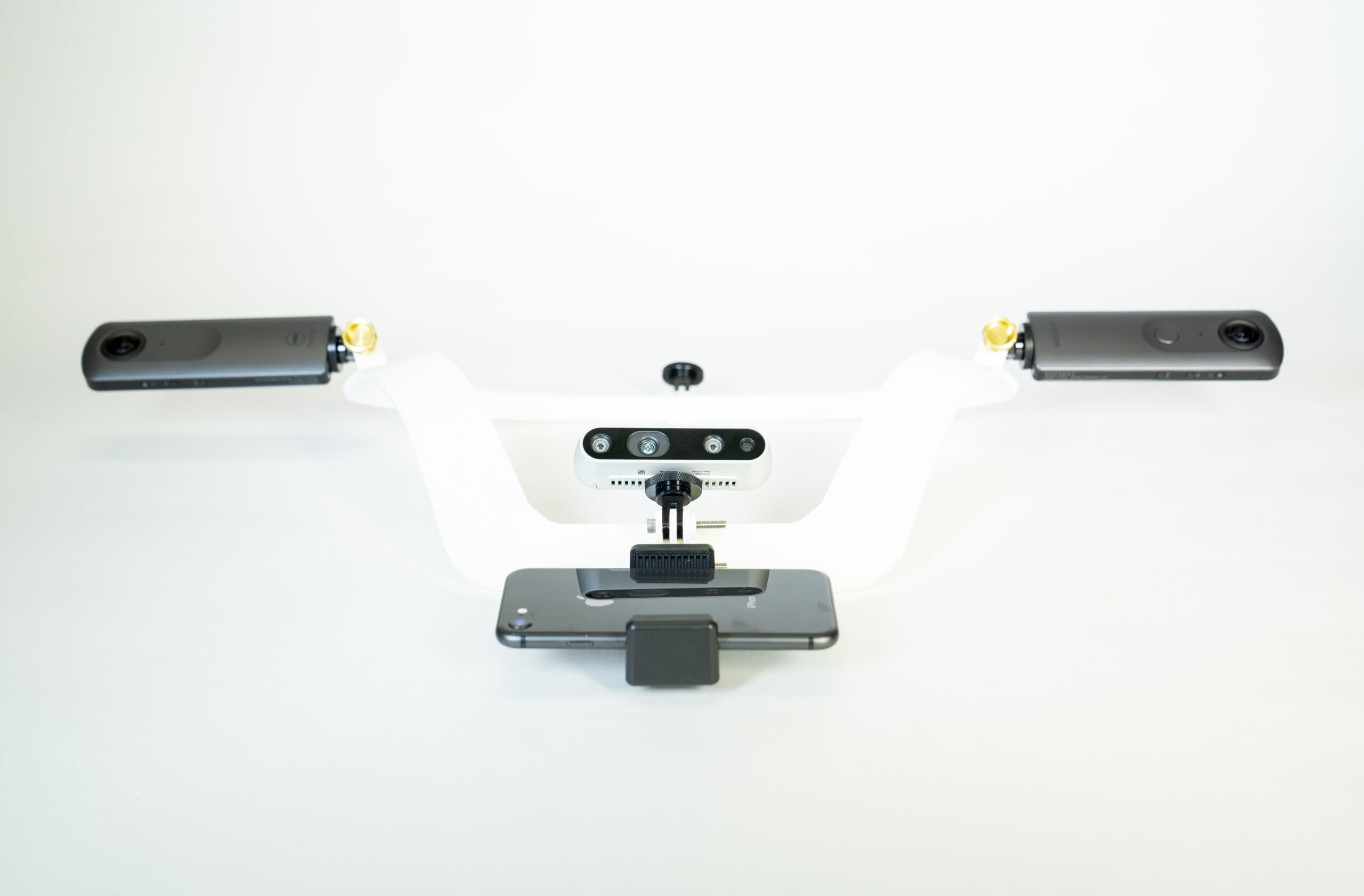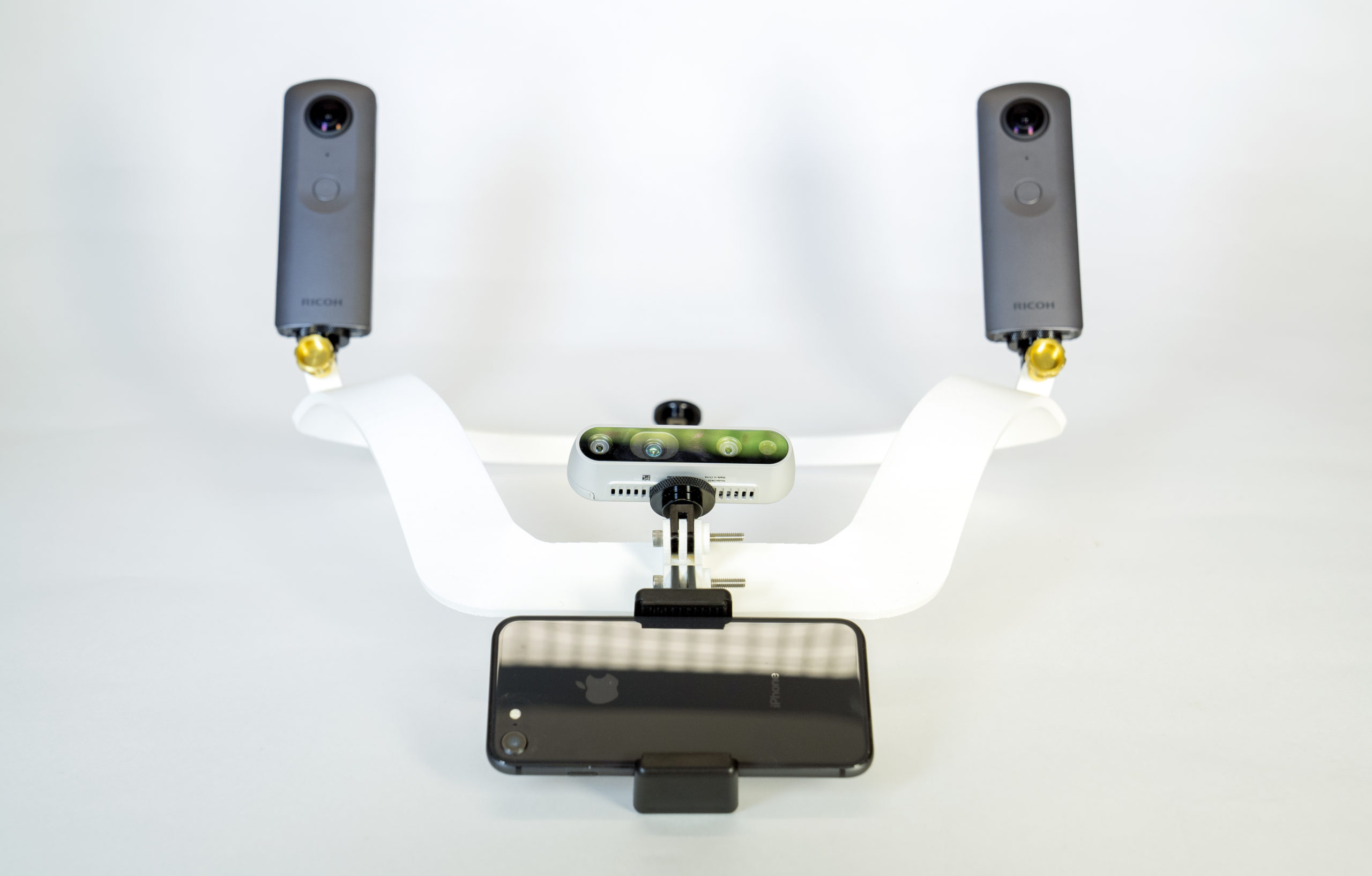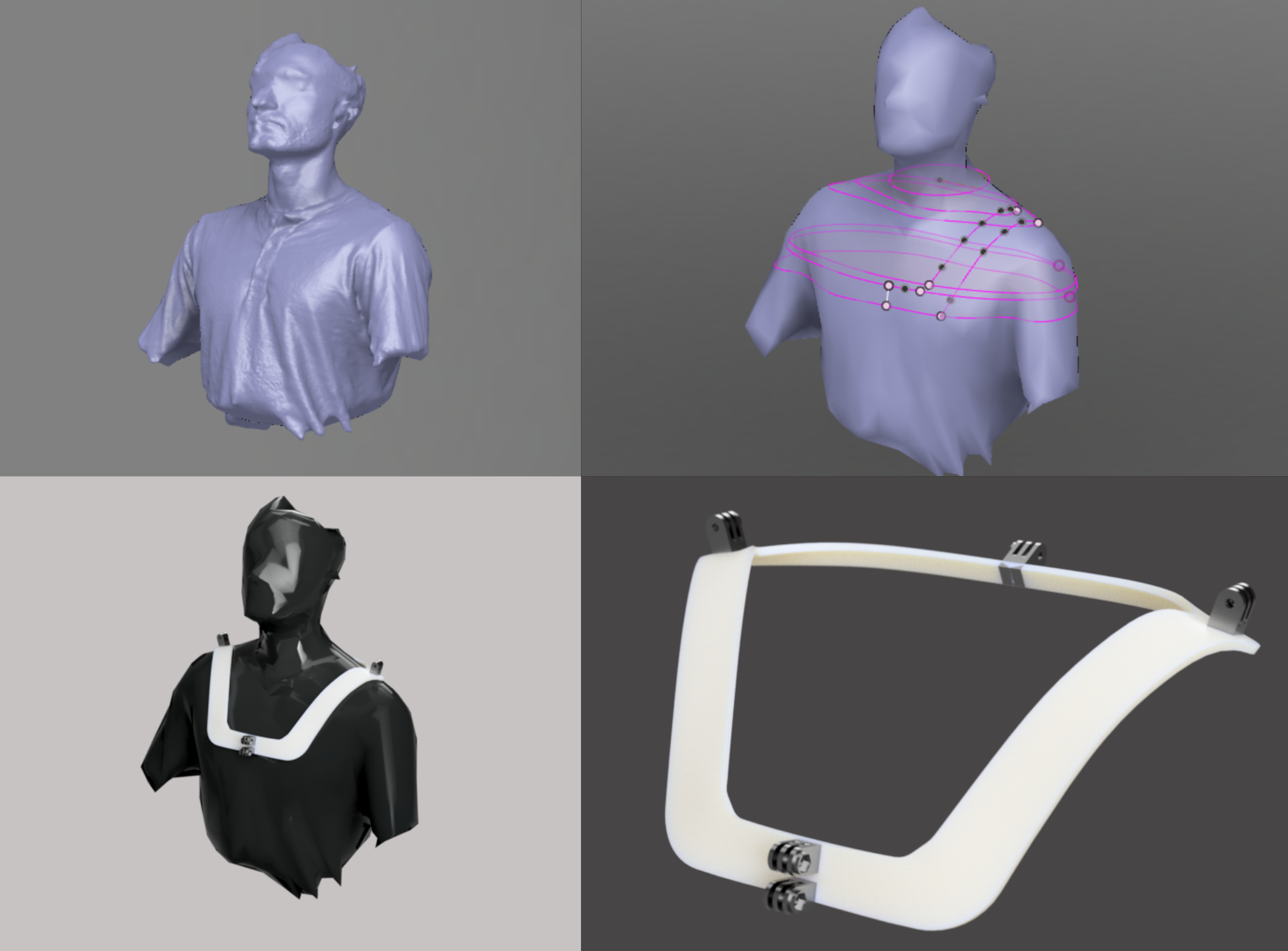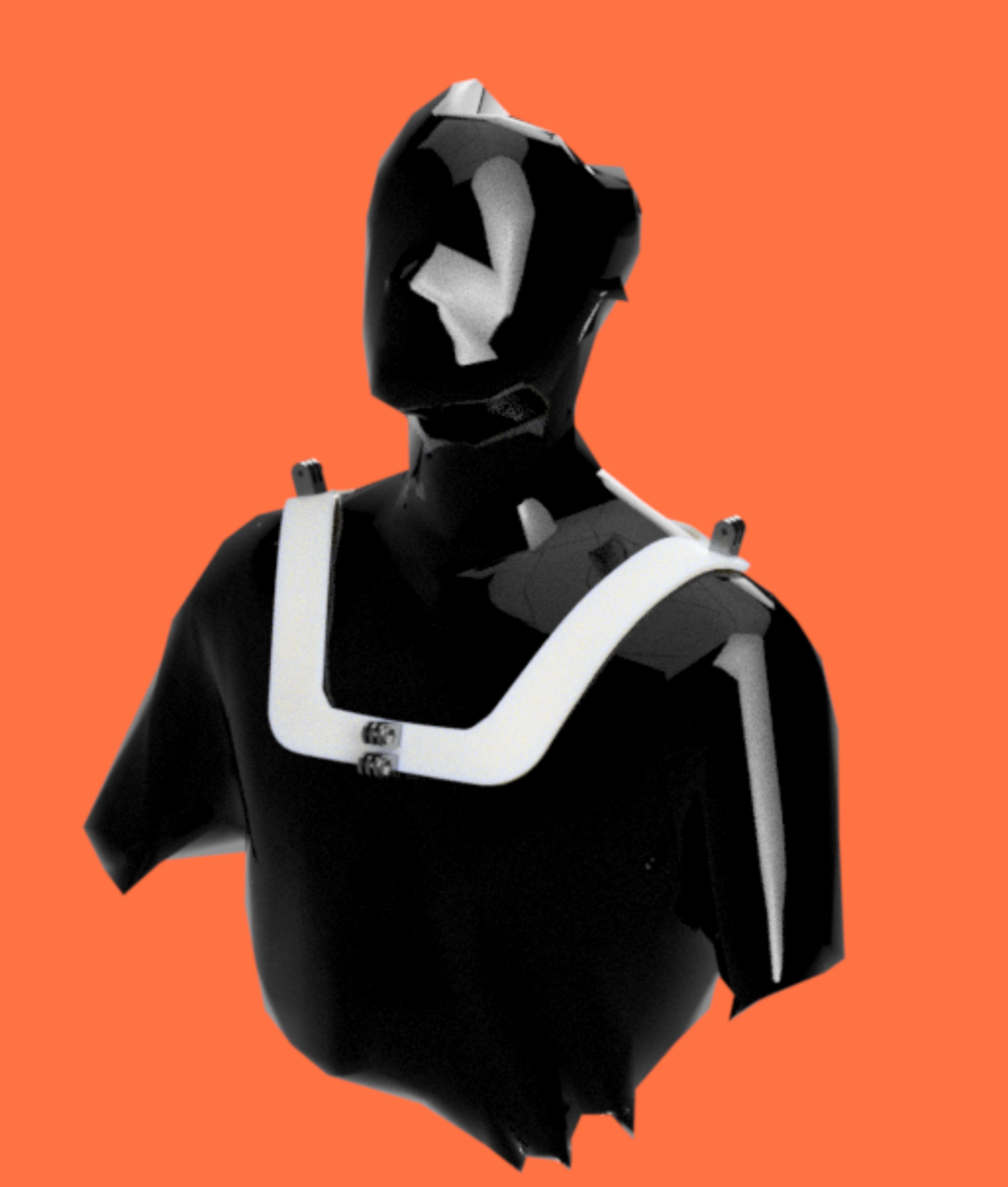
Team: Sahm Bazargan, Jesslyn Cabero, Chin Yi Lin, Abhishek Bhagwat, Pablo Amor Lacaba
Course: Human-Centered Design Methods
Acknowledgments: The teams of the Zakhor Lab and SmartSight acknowledge the Microsoft Accessibility grant which has supported this project for the past year.
The team behind SmartSight set out to develop a functional and desirable wearable device to incorporate the navigation assistant technology developed in Professor Zakhor’s lab from the EECS department. The team followed a human-centered design process, implementing different design methods to realize the best possible solution, identifying social, economic and technical factors related to the problem. The product opportunity gap was to create an audio and/or haptic experience of surrounding visuals that informs the user about the environment and helps to navigate independently.
The SmartSight team conducted extensive user research consisting of interviews, surveys, empathy mapping and AEIOU. The selected concept was to create a neck brace with two 360 degree cameras on the shoulder. The model was designed using CAD software and a 3D scan of a team member’s body. The model was then 3D printed as a single piece and assembled with cameras, mounts and mobile. A prototype was presented to users to receive feedback and define design improvements/iterations.
SmartSight currently features two 360° cameras and one depth camera, integrated with a mobile app that provides the audio information of a surrounding. Together, the cameras and app can identify doors, plugs, elevators, bathrooms, and exits. Two 360° cameras ensure the complete angle of view, without blind spots. The depth camera can detect the distance of detected objects. It also has a modular sensor design with a standardized bracket system.
The team plans to incorporate a mobile camera that continuously takes pictures and stores them on a cloud, which can then be used to better map a building. They would also like to include haptic motors to transmit directional information, as well as increase the number of objects detected with accuracy.




Images courtesy of the SmartSight Team and Adam Lau/Berkeley Engineering.